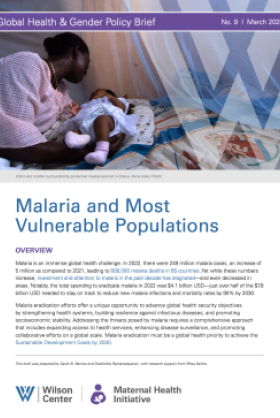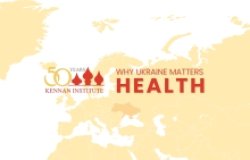Business Insider: Dr. Turner discusses the Cost of Smog to China
Business Insider interviewed CEF Director Jennifer Turner for the article, "Pollution is Costing China's Economy More than $100 Billion a Year."
Pollution Is Costing China's Economy More Than $100 Billion A Year
Meena Thiruvengadam, The Financialist | Mar. 4, 2013, 6:05 PM
China may be the world’s economic beacon of hope, but its pollution problems are hurting the bottom line.
While China is a leading manufacturer of wind turbines and solar panels, it also is home to seven of the world’s 10 most polluted cities, according to a study from the Asian Development Bank and Beijing’s Tsinghua University.
The coal, freight trucks and factories underpinning China’s economic success in recent years are also hurting its environment. Last year, China consumed as much coal as the rest of the world combined, noted Jennifer Turner, director of the China Environment Forum & Global Sustainability and Resilience Program at the Woodrow Wilson International Center for Scholars in Washington, D.C.
The Cost of Smog
Various studies have estimated the economic impact of China’s pollution, and several sources suggest that illness, premature death and lost productivity could be costing the country upwards of $100 billion a year.
The World Bank estimated that illnesses and premature deaths linked to China’s pollution cost it about $100 billion – the equivalent of 3 percent of the country’s annual gross domestic product – in 2009 alone. A separate study by Greenpeace and Peking University estimates particulate pollution cost four major cities more than $1 billion and caused more than 8,000 premature deaths last year.
“China’s economy has skyrocketed, but at a price. Power plants, factories and heavy industries are all belching out black, dirty air, at the cost of our health and our environment,” Greenpeace said.
Data suggests the country’s pollution and related costs may not ease anytime soon. Coal remains a dominant source of power for the country, and citizens are snapping up automobiles at a frenzied pace. Chinese residents bought nearly 20 million automobiles last year, making it the world’s largest auto consumer.
SUV sales alone in China are expected to triple in the next decade, according to the consulting firm McKinsey & Co.
Long-Term Costs
A study released last year by the Massachusetts Institute of Technology estimates labor and health care costs related to China’s pollution cost the economy $112 billion in 2005 — five times as much as in 1975. Rapid urbanization, booming population growth and rising incomes, which increase the value of lost productivity, all contribute to the problem.
But the MIT study aimed to quantify the long-term price of pollution, as well as the immediate costs. The results suggest “that conventional, static methods that neglect the cumulative impact of pollution-caused welfare damage or other market distortions substantially underestimate pollution’s health costs, particularly in fast-growing economies like China,” Kyung-Min Nam, one of the study’s authors, said in a statement released last year in conjunction with the study.
The researchers found that China emits more mercury, carbon dioxide and other pollutants than any other country in the world. Even before its latest boom, China in the 1980s had pollution levels 10 to 16 times higher than guidelines provided by the World Health Organization, the MIT study said.
Hurting the China Brand
Environmental issues are one reason some companies have a harder time getting workers to relocate to China.
“You actually have to pay people more to go live in China, partly because of the pollution issues,” Turner, of the Woodrow Wilson Center, said.
In fact, more Chinese workers also are choosing to telecommute in order to avoid having to step outside, Turner said. Some are reluctant to let children play outside, and the Financial Times has reported that schools in Beijing are building pollution domes to cover outdoor play areas.
Turner expects continued problems could ultimately temper investors’ interest. “You have some international companies thinking, ‘We have to get out of Dodge and produce our products safely,’” she said. “You can run, but you can’t hide from this kind of smog.”
Original link: http://www.businessinsider.com/cost-of-china-smog-2013-3.
Related Programs

China Environment Forum
Since 1997, the China Environment Forum's mission has been to forge US-China cooperation on energy, environment, and sustainable development challenges. We play a unique nonpartisan role in creating multi-stakeholder dialogues around these issues. Read more

Global Risk and Resilience Program
The Global Risk and Resilience Program (GRRP) seeks to support the development of inclusive, resilient networks in local communities facing global change. By providing a platform for sharing lessons, mapping knowledge, and linking people and ideas, GRRP and its affiliated programs empower policymakers, practitioners, and community members to participate in the global dialogue on sustainability and resilience. Empowered communities are better able to develop flexible, diverse, and equitable networks of resilience that can improve their health, preserve their natural resources, and build peace between people in a changing world. Read more










